Dancer, courtesan, and alleged spy Mata Hari is executed for espionage by a French firing squad at Vincennes outside of Paris.
She first came to Paris in 1905 and found fame as a performer of Asian-inspired dances. She soon began touring all over Europe, telling the story of how she was born in a sacred Indian temple and taught ancient dances by a priestess who gave her the name Mata Hari, meaning “eye of the day” in Malay.

In reality, Mata Hari was born in a small town in northern Holland in 1876, and her real name was Margaretha Geertruida Zelle. She acquired her superficial knowledge of Indian and Javanese dances when she lived for several years in Malaysia with her former husband, who was a Scot in the Dutch colonial army. Regardless of her authenticity, she packed dance halls and opera houses from Russia to France, mostly because her show consisted of her slowly stripping nude.
She became a famous courtesan, and with the outbreak of World War I, her catalog of lovers began to include high-ranking military officers of various nationalities.
In February 1917, French authorities arrested her for espionage and imprisoned her at St. Lazare Prison in Paris. In a military trial conducted in July, she was accused of revealing details of the Allies’ new weapon, the tank, resulting in the deaths of thousands of soldiers. She was convicted and sentenced to death, and on October 15 she refused a blindfold and was shot to death by a firing squad at Vincennes.

There is some evidence that Mata Hari acted as a German spy, and for a time as a double agent for the French, but the Germans had written her off as an ineffective agent who produced little intelligence of value.
Her military trial was riddled with bias and circumstantial evidence, and it is probable that French authorities trumped her up as “the greatest woman spy of the century” as a distraction for the huge losses the French army was suffering on the western front.
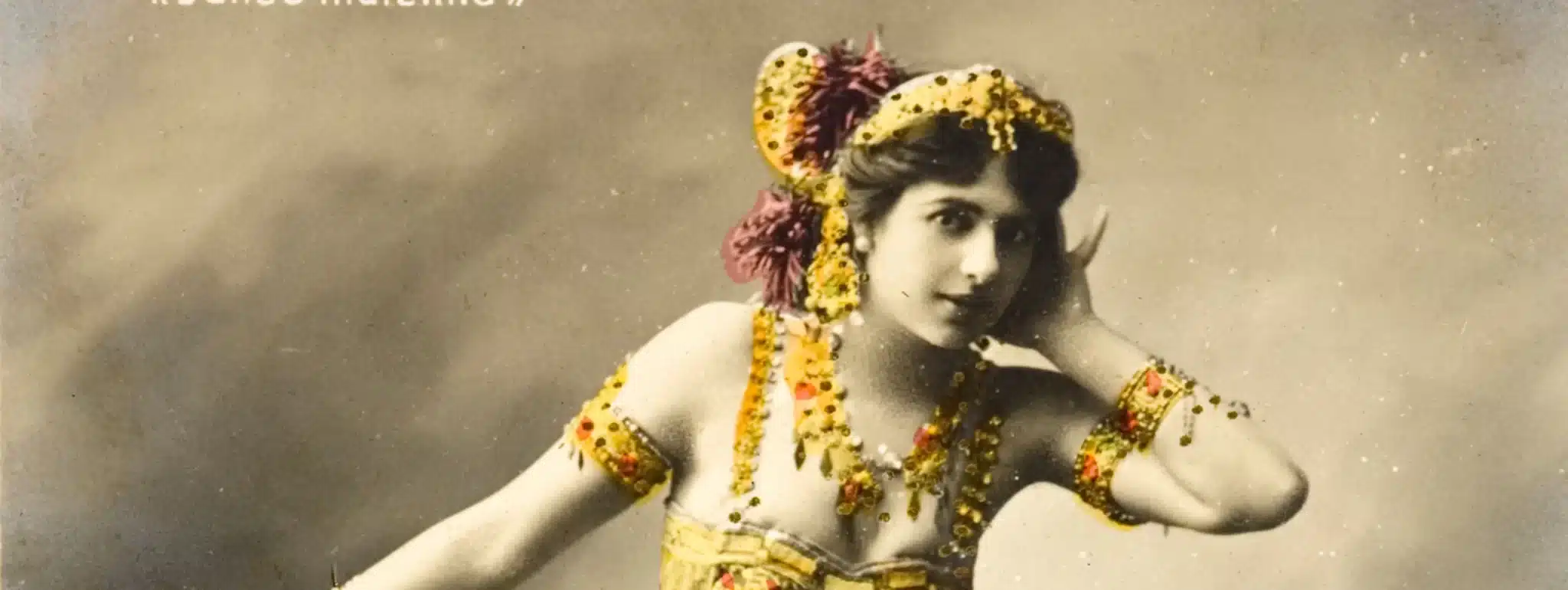
Mata Hari spent much of her career claiming that she was raised as an Indian temple dancer. In reality, however, she was born Margaretha Zelle on August 7, 1876, and grew up the daughter of a haberdasher in the Dutch town of Leeuwarden. Desperate for adventure, at age 18 she answered a newspaper ad and wed a much older army captain named Rudolf MacLeod.
His military career later took the couple to Indonesia, where they had two children, but their marriage was plagued by infidelity and domestic violence. Following the death of their young son, they moved back to Europe and divorced. The 27-year-old Margaretha was left impoverished. In 1903, after losing custody of her daughter, she moved to Paris and looked to start over. “I wanted to live like a colorful butterfly in the sun,” she later said.
It was in the City of Lights that Margaretha Zelle reinvented herself as an artist. Drawing on her experiences in the Dutch East Indies, she developed a “Hindu” dance act and began performing under the name “Lady Gresha MacLeod.” As part of each routine, she would cast off a series of colorful robes and veils until she was left nearly nude.
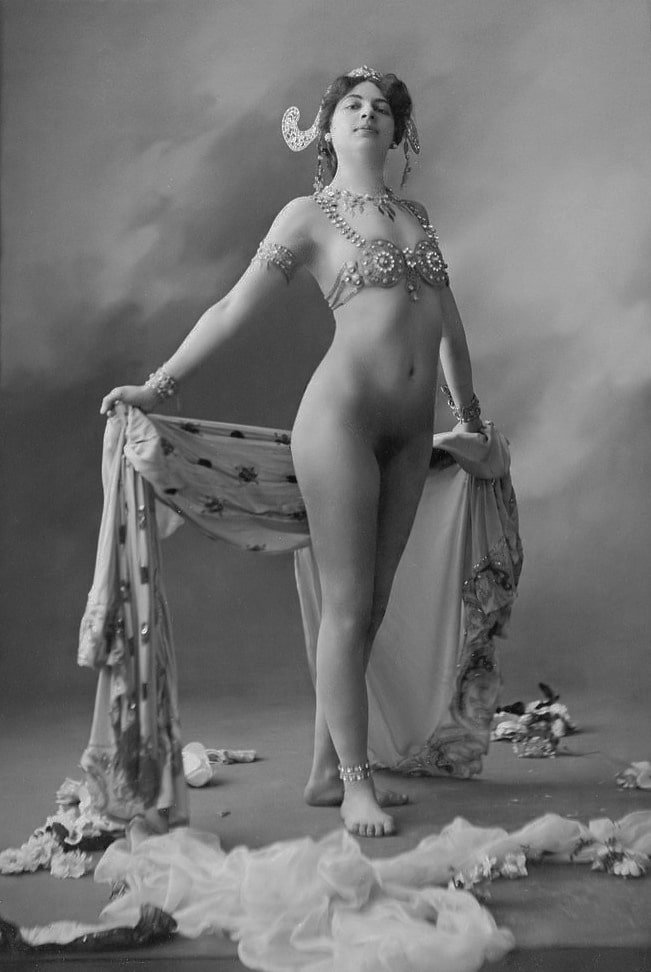
“I never could dance well,” she later admitted. “People came to see me because I was the first who dared to show myself naked to the public.” To add to her mystique, Margaretha adopted the stage name “Mata Hari,” a Malay phrase meaning “eye of the day.”
Audiences were entranced by Mata Hari’s claims that her rhythmic, undulating movements were part of an ancient temple rite from the Orient, and her shows quickly became a sensation. “Mata Hari personifies all the poetry of India,” one reviewer wrote, “its mysticism, its voluptuousness, its languor, its hypnotizing charm.”
Declared a “Star of Dance” in 1908, the olive-skinned beauty spent the next several years traveling Europe and performing before sold-out crowds. She also began affairs with a series of military officers and wealthy aristocrats, many of whom showered her with gifts and cash. “Tonight I dine with Count A and tomorrow with Duke B,” she once quipped. “If I don’t have to dance, I make a trip with Marquis C. I avoid serious liaisons.”
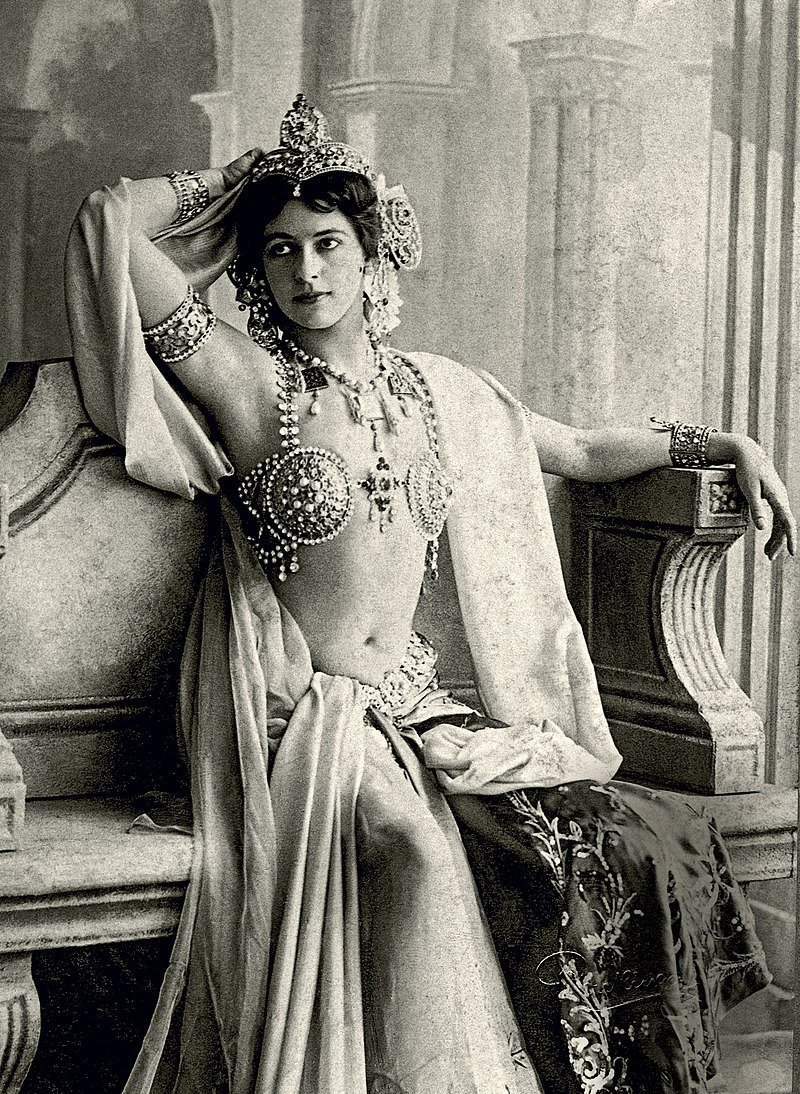
By 1914, however, Mata Hari’s dalliances with rich men had become a matter of financial survival. She was now nearly 40, and she had watched her dancing career slowly stagnate. Her problems only mounted with the outbreak of World War I. She was in Berlin at the time, and when she tried to travel to France, the Germans confiscated her luggage and bank accounts. She was forced to return to her neutral homeland of Holland, where she resumed an old affair with a wealthy Dutch baron.
Over the next several months, Mata Hari continued traveling through Europe and carrying out flings with military officers and politicians. Her constant movements—not to mention her presence in Germany at the beginning of the war—had soon attracted the attention of British intelligence, which suspected her of being an enemy agent. After questioning Mata Hari when she passed through England, the British cautioned their French allies to watch her closely. “Although she was thoroughly searched and nothing incriminating found,” a report read, “she is regarded by Police and Military to be not above suspicion, and her subsequent movements should be watched.”

Mata Hari only sank deeper into wartime intrigue in 1916. That summer, a French intelligence operative named Georges Ladoux approached her in Paris with yet another lucrative espionage offer—this time to spy for France. Ladoux was well aware of Britain’s suspicions that she was a German agent, but he seems to have considered the recruitment a means of either entrapping her or turning her to his side.
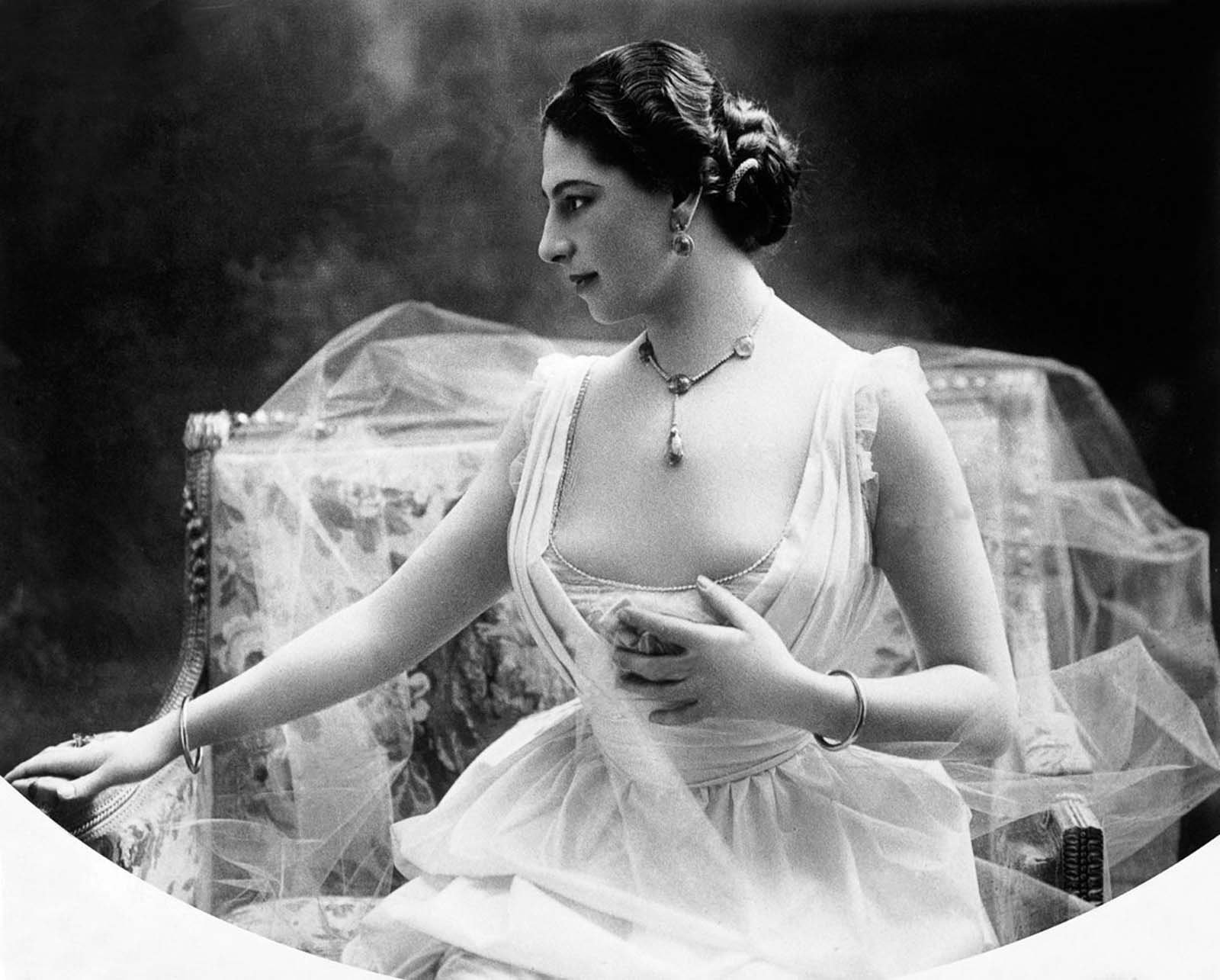
By then, Mata Hari had begun a passionate romance with Vladimir de Masloff, a 21-year-old Russian army captain. Anxious to make money to start a new life with him, she accepted Ladoux’s deal and announced her intentions to seduce military secrets out of high-ranking Germans.
Following an abortive attempt to travel to Belgium in November 1916, Mata Hari ended up in neutral Spain, where she bedded a German major named Arnold Kalle. Just what transpired between the two is the subject of much debate. The dancer evidently made a bumbling attempt to glean information from Kalle, but she may have also offered him her services as a spy.

In either case, by the time she returned to Paris, a French wireless station at the Eiffel Tower had intercepted coded messages that Kalle sent to Berlin. Each of the communiqués referred to agent “H 21,” whom the French quickly identified as Mata Hari. Kalle’s messages may have been a calculated ploy to expose her—he allegedly sent the telegrams in an old code that the Germans knew the Allies had cracked—but they were all the evidence Ladoux needed. On February 13, 1917, Mata Hari was arrested, charged with espionage and confined to Paris’ infamous Saint-Lazare prison.
When not languishing in her damp, lice-ridden cell, the dancer spent the next several months under interrogation. While she spoke frankly about her promiscuous lifestyle, she was adamant that she had never committed espionage for any country other than France.
“A courtesan, I admit it,” she said. “A spy, never!” When questioned about Kalle’s messages, she came clean about accepting money from the Germans but denied passing them any secrets. “I never considered myself a German agent with a number,” she pleaded, “because I never did anything for them.”
Mata Hari’s espionage trial commenced on July 24, 1917. Despite a lack of evidence about the secrets she might have passed to the Germans, the prosecution blamed her for the deaths of thousands of Allied soldiers and pointed to her numerous affairs as proof that she had been gathering intelligence.
“The evil that this woman has done is unbelievable,” prosecutor Andre Mornet concluded in his final statement. “This is perhaps the greatest woman spy of the century.” In the end, it took a military tribunal less than an hour to find her guilty and sentence her to death.
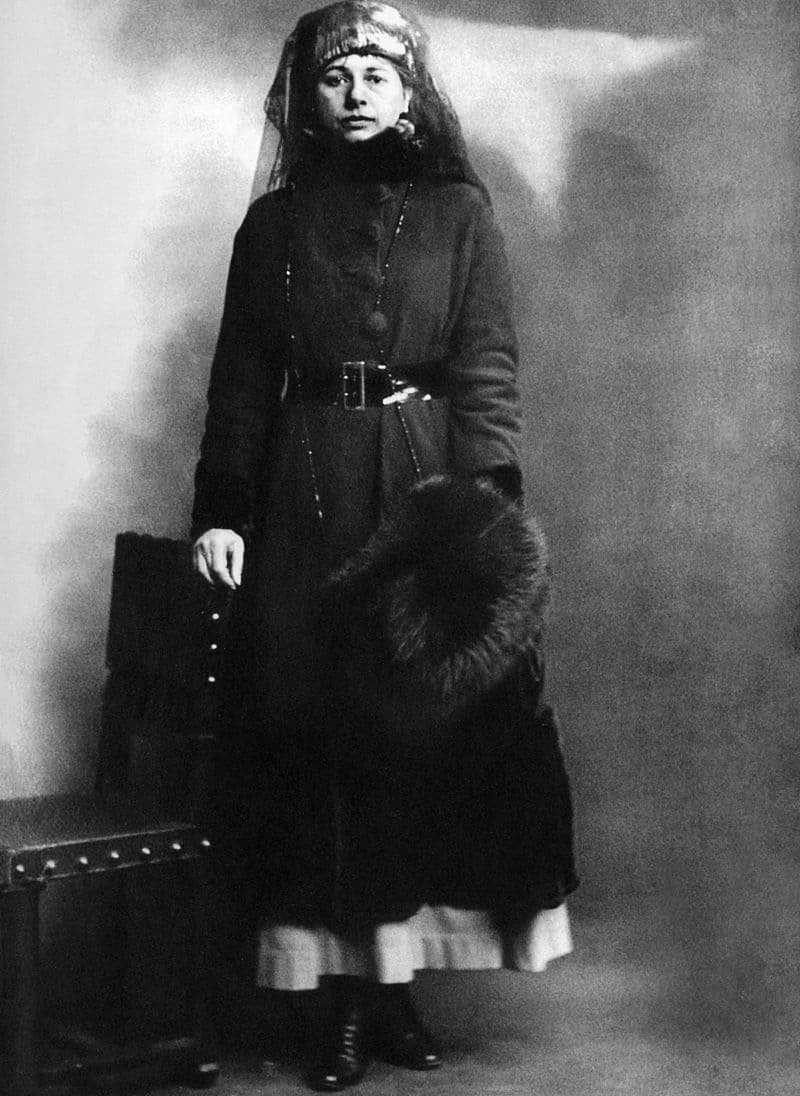
The question of Mata Hari’s guilt continues to fascinate historians to this day. The documents from her trial were sealed for several decades, but many of the researchers who’ve since studied them have concluded that the case against her was flimsy. Most of the prosecution’s evidence was circumstantial, and her defense attorney was prevented from introducing witnesses that might have backed up her claims.
While many scholars remain convinced that Mata Hari was indeed a spy, others contend that she was scapegoated or even framed in order to raise French morale during one of the darkest periods of the war. Nevertheless, the true extent of her espionage may never be known for certain.
Whether guilty or innocent, at dawn on October 15, 1917, Mata Hari was driven to a field on the outskirts of Paris. After refusing a blindfold, she was placed against a wooden stake and executed by a firing squad of twelve French soldiers. Ever the performer, she supposedly blew a kiss to the troops moments before the fatal shots rang out.
Sources
ATTENTION READERS
We See The World From All Sides and Want YOU To Be Fully InformedIn fact, intentional disinformation is a disgraceful scourge in media today. So to assuage any possible errant incorrect information posted herein, we strongly encourage you to seek corroboration from other non-VT sources before forming an educated opinion.
About VT - Policies & Disclosures - Comment Policy




One wonders how and from who she allegedly acquired the intel about tanks? Seems like she was played as the perfect pawn by the Abwehr.
Comments are closed.